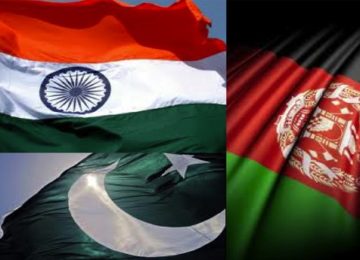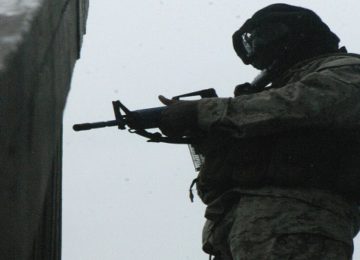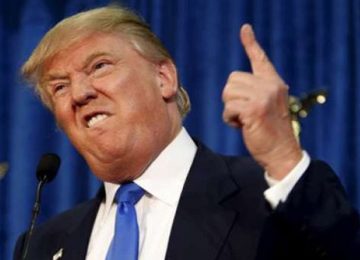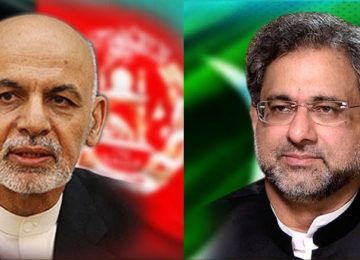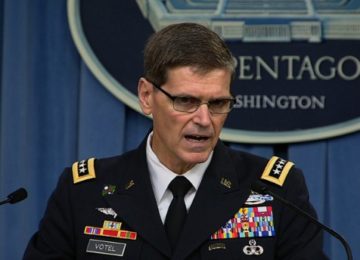The latest development on Afghanistan is that President Donald Trump is looking at all possible options for the war-torn country. The shifting complex ground realities have effectively eroded the innate utility of each and every option the maverick leader had in mind in the initial days of his Presidency. Now he is unable to select one. He does not find any option good enough to advance broader US strategic objectives in the neighbourhood of two rising powers; China and Russia.
Since the goal post has changed and it is not limited to Afghanistan alone, the National Security Team, specifically tasked to craft a new strategy, is still fumbling for a panacea. The burgeoning rift within the White House and between Congress and the administration has further complicated its job. The team was scheduled to announce the new strategy in June but the deadline was later shifted to July and now to September.
The delay is understandable. The emergence of Taliban’s nexus with Russia, Iran and expanding ties with China have raised the spectre that the second round of cold war with three rivals could start in Afghanistan. This alarming possibility, albeit remote, requires a departure from the past tactical moves on the part of American strategists.
In this background one can appreciate the Manila statement of Secretary of State Rex Tillerson that Donald Trump has raised “ … some very, very pointed questions, … good questions”. He further claimed that “we want to give him good, thorough answers and good, thorough analysis to go with that, a very clear-eyed view, a very realistic view of what the future is likely to look like”.
Nevertheless, not only in the region but also within the US, the delay has bred disappointment and thrown up a new set of questions raising doubts whether the US president is really interested in Afghanistan or just focused on something big like action against North Korea and Iran. Senator John McCain, who heads the Senate Armed Services Committee, recently warned that the committee would announce its own Afghan policy if the administration fails to send the new strategy to the Senate by September.
Tillerson is right that “dealing with Afghanistan is not easy because “this is a very, very tough area” perhaps because of new factors of uncertainty. He avoided disclosing the nascent thinking on the contours of the new strategy on Afghanistan. But Defense Secretary Jim Mattis was a bit more explicit when addressing the House Armed Services Committee he said that the options he would “very soon” present on Afghanistan to the President, which would take a regional approach rather than looking at the war-torn country in isolation. This was a clear indication that the new policy would look at new developments and challenges. In terms of approach towards Afghan neighbours, Munir Akram, a former Pakistani Ambassador, (July 23, 2017) envisaged “a tougher posture towards Pakistan and closer cooperation with India” in the new policy.
NBC journalist Courtney Kube is also of the same view (Dawn, Aug. 8). He feels, Pentagon is considering “an expanded and more aggressive role in Afghanistan, one that would include the American military once again targeting both Taliban and Haqqani network fighters, and the new strategy will also focus heavily on the relationship between Afghanistan and Pakistan and terror networks throughout the region”.
One should not forget the June 2017 DoD Report: Pakistan is Reason for Afghanistan Stalemate, where “the exploitation of ungoverned sanctuaries outside of Afghanistan by terrorists and Afghan insurgents” has been singled out as “the greatest external factor that could cause failure of the coalition campaign.” What it means for Taliban, Iran, Russia and more importantly Pakistan is not hard to guess.
Some conclusions may be drawn from the June 19 statement of the US Chairman of the Joint Chiefs of Staff (Joe Dunford). He said, “Pakistan is a key to Afghanistan and its security.” He underlined that “Haqqani does not have sanctuary in South Asia, and … Taliban don’t have sanctuary in South Asia, … there’s a secure border between Afghanistan and Pakistan, … there’s effective political and military relationships between Pakistan and Afghanistan, that’s one of the interdependent variables that’s going to allow us to be successful”.
Can we deem it as a new approach towards Pakistan or the volatile region? What are the potential responses under discussion; These can include expanding U.S. drone strikes, reducing aid to Pakistan, downgrading Pakistan’s status as a major non-NATO ally, and instead strengthening strategic partnership with “natural partner” India and more hostility towards Russia and Iran. How and in what way these options are dissimilar from the current flawed Afghan policy of Obama?
Pakistan would be disappointed but not surprised if the new policy just consists of fire and fury directed at wrong targets. Pakistan is aware of the US past and present strategy for Afghanistan. It has suffered an incalculable material and human loss. If in the US reckoning, there were no other options, Pakistan would have to come up with matching responses, in due course, as best as it can. Pakistan and all regional countries would continue to suffer. US and its coalition partners will also suffer.
Trump’s frustration over the performance of US generals in Afghanistan seems to have touched the nadir. During a July 19 meeting in the White House, he reportedly said, Mattis and Dunford, might want to consider firing Nicholson, Commander of U.S. forces in Afghanistan. Afghans, who like the Commander as the link in the absence of US ambassador since December 2016, then feared that ‘they are being abandoned by Trump’.
The plain truth is that US, with all its military might, cannot accept defeat after a 16-year-old war. It needs to shift the blame for its failure on someone else. Because of Pakistan’s past association with Taliban, the world is likely to buy the US allegation that the country is providing safe havens for militants and Taliban. The accusation is not new. The US has never believed Pakistan’s fierce denial that it was not allowing the use of territory by Taliban and other militants. Instead, the US has always asked Pakistan to “do more” disregarding the denial.
Nicholson, McMaster and Lisa Curtis, senior director for South and Central Asia at the National Security Council are lobbying for stern action against Pakistan. What are they proposing; expanding US drone strikes, drastic reduction in aid, downgrading Pakistan’s status as a major non-NATO ally, bolstering US-India strategic partnership and promoting major Indian role in the eventual solution of the Afghan crisis, etc. But these measures are unlikely to succeed and could create more problems than they solve. These options are inherently self-conflicting. There are some sane elements too who take a broader view of Pakistan’s strategic importance. They rightly argue that harsh actions would not secure more cooperation from Islamabad or from Iran and rival Afghan parties.
After six months of the new administration, the fog surrounding the Afghan Policy Review has not cleared off to a stage where one can make an intelligent guess as to what is in the pot. Reuters found Trump’s frustration in the current Afghan Policy Review echoing Obama Years (August 6, 2017). The situation is so bad that some in the U.S. government, including Steve Bannon, wanted America to simply cut its losses and walk away from the mess.
The irony is that even the delay in reaching an agreement on new options is being pinned on Pakistan. Reportedly, the division within Trump’s administration on how much to pressure Pakistan, how quickly and in which areas, is causing delay in finalising the new strategy.
In view of the persistent steady gains throughout the southern, eastern, and central parts of the country, US military contractor Erik Prince has advised President Trump to deploy mercenaries to Afghanistan to save both military and money. This has also created discussion on whether it is feasible given the negative potential Afghan response.
One should not forget that now aside from Taliban, many new elements are against foreign troops in Afghanistan. Former Prime Minister Gulbadin Hekmatyar rejected any increase in US troops and said elections were the only way to bring stability to Afghanistan. He wants “a strong central government led by a powerful president. Without this, it is impossible to bring peace and stability to the country” (Aug 7,2017).
What are America’s strategic objectives in Afghanistan? US goals are broader than eliminating terrorism and militancy in Afghanistan. US aim is not limited to supporting one specific individual. Yesterday, it was Hamid Karzai, today it is Ashraf Ghani and tomorrow it could be any one else. Its priority is to create strategic space and influence, counterbalancing the rising powers, China and Russia. For this, the US is staying put in Afghanistan for a long time.
The success of American new strategic goal depends on full cooperation from Pakistan and help from China and Russia. This could happen only through diplomacy, not by use of coercive measures. In Afghanistan, the natural partner in peace is Pakistan. While reviewing its Afghan Policy, US must realize that now is not the time to turn its back on Pakistan and start squeezing China and Russia.
The writer Mian Sanaullah is a former Ambassador. He can be reached at mian.sana@gmail.com.
© 2017 Afghan Studies Center. All rights reserved.




